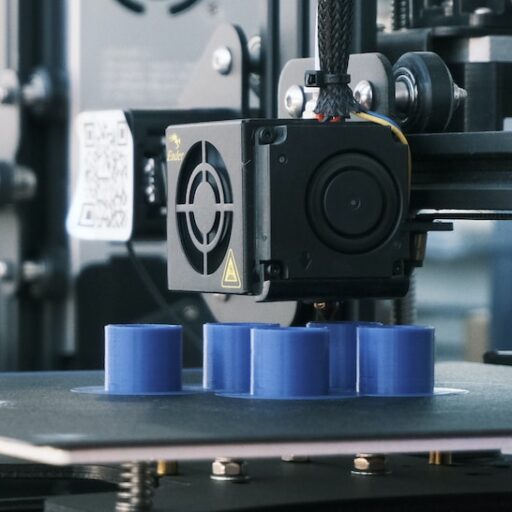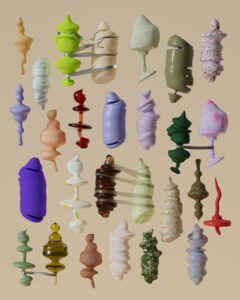Support our educational content for free when you purchase through links on our site. Learn more
What are 3D Printed Objects Used For? [2024]

Imagine a world where you can bring your imagination to life, where you can create anything you desire with just a few clicks. Well, with the advent of 3D printing technology, that world is becoming a reality. In this article, we will explore the fascinating world of 3D printed objects and delve into the myriad of ways they are used in various industries and everyday life.
Quick Answer
3D printed objects are used in a wide range of industries and applications, including manufacturing, healthcare, automotive, aerospace, architecture, and consumer goods. They are used for rapid prototyping, creating customized products, producing complex geometries, and even bioprinting human tissues and organs. The possibilities are endless!
CHECK PRICE on: 3D Printers | Filaments | Resins
Quick Tips and Facts
- 3D printing, also known as additive manufacturing, is a process of creating three-dimensional objects by layering materials based on a digital model.
- The most common materials used in 3D printing include plastics, metals, ceramics, and even biological materials.
- 3D printed objects can be highly complex, with intricate details and geometries that are difficult or impossible to achieve with traditional manufacturing methods.
- The cost of 3D printing has significantly decreased over the years, making it more accessible to individuals and small businesses.
- 3D printing has revolutionized the prototyping process, allowing for faster and more cost-effective product development.
- The medical field has embraced 3D printing for creating customized implants, prosthetics, and even human tissues and organs.
- 3D printing has played a crucial role during the COVID-19 pandemic, enabling the production of personal protective equipment (PPE) and medical supplies.
Background: The Rise of 3D Printing

Before we dive into the various applications of 3D printed objects, let’s take a brief look at the history and evolution of 3D printing technology. The concept of 3D printing dates back to the 1980s when the first patent for a 3D printing process was filed. However, it wasn’t until the early 2000s that 3D printing started gaining traction and becoming more accessible.
Over the years, advancements in technology and materials have propelled 3D printing into the mainstream. Today, 3D printers come in various sizes and price ranges, making them accessible to individuals, hobbyists, and businesses alike. The ability to create custom objects with intricate details and complex geometries has opened up a world of possibilities across different industries.
Applications of 3D Printed Objects
1. Rapid Prototyping
One of the most significant applications of 3D printing is rapid prototyping. Traditionally, creating prototypes for new products was a time-consuming and expensive process. With 3D printing, designers and engineers can quickly turn their ideas into physical prototypes, allowing for faster iteration and refinement.
✅ Quick Tip: 3D printing enables designers to test the functionality and aesthetics of a product before committing to mass production, saving time and money.
2. Customized Products
Another exciting application of 3D printing is the ability to create customized products. Whether it’s personalized jewelry, custom-fit prosthetics, or even tailored fashion items, 3D printing allows for the production of one-of-a-kind objects that cater to individual needs and preferences.
✅ Quick Tip: 3D printing empowers consumers to become creators, enabling them to design and produce their own unique products.
3. Complex Geometries
Traditional manufacturing methods often have limitations when it comes to producing objects with complex geometries. 3D printing, on the other hand, excels at creating intricate and complex shapes that would be challenging or impossible to achieve with traditional methods.
✅ Quick Tip: 3D printing enables the production of lightweight structures with internal cavities and intricate designs, making it ideal for industries such as aerospace and automotive.
4. Bioprinting
One of the most groundbreaking applications of 3D printing is bioprinting, which involves the creation of human tissues and organs using biological materials. This technology has the potential to revolutionize the field of medicine, offering personalized solutions for patients in need of transplants or prosthetics.
✅ Quick Tip: Bioprinting is still in its early stages, but researchers are making significant progress in creating functional tissues and organs using 3D printing technology.
5. Other Industries
The applications of 3D printed objects extend beyond rapid prototyping and personalized products. Here are some other industries that benefit from 3D printing:
-
Automotive: 3D printing is used in the automotive industry for prototyping, creating spare parts, and even manufacturing aids and tools. It allows for faster iteration and customization, reducing production time and costs.
-
Aerospace: 3D printing plays a crucial role in the aerospace industry, where lightweight and complex components are required. It enables the production of reliable and high-performance parts, reducing weight and fuel consumption.
-
Architecture and Construction: 3D printing is used in architecture and construction for creating scale models, prefabricated parts, and even entire buildings. It offers faster construction times, cost savings, and the ability to create unique designs.
-
Medical and Healthcare: In addition to bioprinting, 3D printing is used in the medical and healthcare industry for creating customized implants, surgical guides, and anatomical models for surgical planning. It allows for better patient outcomes and improved surgical precision.
The Benefits of 3D Printing
Now that we’ve explored the various applications of 3D printed objects, let’s take a closer look at the benefits of this technology:
-
Design Freedom: 3D printing allows for the creation of complex geometries and intricate designs that would be challenging or impossible to achieve with traditional manufacturing methods.
-
Cost-Effectiveness: 3D printing can be more cost-effective, especially for small production runs or customized products, as it eliminates the need for expensive molds or tooling.
-
Faster Time-to-Market: With rapid prototyping and faster production times, 3D printing enables businesses to bring products to market more quickly, gaining a competitive edge.
-
Reduced Waste: Traditional manufacturing methods often result in significant material waste. 3D printing, on the other hand, is an additive process that only uses the necessary amount of material, reducing waste and environmental impact.
-
Customization: 3D printing allows for the creation of personalized and customized products, catering to individual needs and preferences.
FAQ

What is 3D printing used for?
3D printing is used in a wide range of industries and applications, including manufacturing, healthcare, automotive, aerospace, architecture, and consumer goods. It is used for rapid prototyping, creating customized products, producing complex geometries, and even bioprinting human tissues and organs.
Read more about “Best 3D Printers 2024: Unleashing the Power of Creativity”
How is 3D printing used in real life?
In real life, 3D printing is used for various purposes, such as creating prototypes, manufacturing spare parts, producing customized products, and even creating human tissues and organs for medical purposes. It has revolutionized industries and enabled faster, more cost-effective production processes.
Read more about “50 Revolutionary Ways 3D Printing is Changing the World …”
Where is 3D printing useful?
3D printing is useful in industries such as manufacturing, healthcare, automotive, aerospace, architecture, and consumer goods. It is also valuable for individuals and hobbyists who want to bring their ideas to life or create customized products.
Read more about “Is 3D Printing a Good Thing? …”
What are 5 benefits of 3D printing?
The benefits of 3D printing include design freedom, cost-effectiveness, faster time-to-market, reduced waste, and customization. It allows for the creation of complex designs, eliminates the need for expensive tooling, enables faster production times, reduces material waste, and offers personalized solutions.
Read more about “9 Unique Ways to Make Money With Your 3D Printer …”
Conclusion

In conclusion, 3D printed objects have revolutionized the way we create and manufacture products. From rapid prototyping to customized solutions, the applications of 3D printing are vast and diverse. Whether it’s in the automotive industry, healthcare sector, or even bioprinting human tissues, 3D printing has the potential to transform various industries and improve our lives.
So, what are you waiting for? Dive into the world of 3D printing and unleash your creativity. The possibilities are endless!
Recommended Links
- Beginner’s Guides
- Industry News
- 3D Printable Objects
- Commercial 3D Printing Projects
- Free 3D Models
- What is the meaning of 3D printed?
Reference Links
- What can you make with a 3D printer? | HP® Official Site
- Additive Manufacturing: 3D Printing for Prototyping and Production
- The Role of 3D Printing in Medical Applications: A State-of-the-Art
- 3D Printing in the Automotive Industry: From Rapid Prototyping to Final Parts
- Additive Manufacturing in Aerospace: Examples and Research Outlook
- 3D Printing in Construction: A Review on the Scientific and Commercial State-of-the-Art
- 3D Printing in Medicine: A Review of Current Medical Applications




